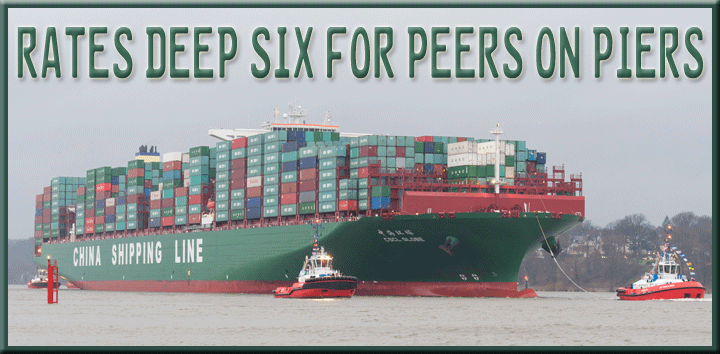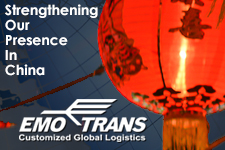
Air freight rates and slow demand from key markets might be proving somewhat dispiriting for airlines this year, but if anything the container shipping sector—and its customers—are suffering even more than their airborne counterparts (and sometime rivals).
Shipping lines have been struggling with bearish volume growth of just 2-4 percent for much of the year, while shippers and forwarders have had to cope with two years of almost monthly General Rate Increases by lines on the major trades. Even when GRIs have gained some traction initially, a typical pattern has seen any short-term spot rate gains quickly followed by sliding rates until the next GRI has been introduced. The upshot has been a rates roller coaster the management of which has become costly business for all parties.
And this damaging cycle shows no sign of stopping. Excess supply—the key cause of plummeting prices and regular GRIs as lines look to reduce losses—looks like it will plague the market for at least the next 12 months, as ocean carriers continue to order the largest, most fuel efficient vessels in a bid to reduce average container slot costs and maintain competitiveness and market share on the critical Asia-Europe and Transpacific lanes. But the strategy is further adding to the imbalance between supply and demand. And attempts to differentiate on service are no longer taken seriously—liner shipping services are treated as a commodity, so predictably price trumps all else.
Moreover, demand growth estimates have been far too optimistic for 2015. Although U.S. markets are performing relatively well, demand out of China has slowed and Europe remains, at best, in recovery mode. The latter is of particular concern to lines because the Asia-Europe trade is the only deployment option for the biggest container ships. Up to 90 percent of vessels operating on Asia-Europe are now estimated to be making a loss. Lines have countered with blank sailings, slow steaming, and seasonal services to increase slot utilization levels on East-West trade, but the dip being suffered by a number of key ‘emerging’ economies is also now hurting rates and demand on North-South routes.
Most major lines reported high single-digit or double-digit percentage year-on-year declines in average yield per TEU in their first half results as the China Containerized Freight Index fell to 819 in the second week of August, down from over 1,000 points a year earlier.
Mr. C. C. Tung, chairman of OOIL, owner of Hong Kong-based line OOCL, said the industry experienced a volatile period during the first half of 2015. “In the earlier months of 2015, the industry enjoyed a relative stable freight market,” he said. “Through the combination of the normal seasonal cargo rush prior to Chinese New Year, capacity constraints arising from port congestion and disruptions in the U.S., and an improving cost structure created by lower oil prices, the industry made meaningful gains in margin performance.
“In the latter half of the reporting period, with idling ships reactivated and new build capacity delivered, freight rates moved rapidly downwards, forcing margins to narrow.”
With many lines struggling financially, efforts are again turning to consolidation. The two Chinese shipping giants—COSCO and CSCL—are in talks about merging. The deal was called “ironic” by analysts at Drewry given that it was Chinese regulators that had previously stopped a group of major shipping lines from joining forces on competition grounds.
Drewry also believes the proposed deal could lead to further consolidation of shipping lines on national lines with Taiwan and Japan, both boasting a handful of shipping majors, the most likely countries to follow suit. Elsewhere, Singapore’s APL is also understood to be available for sale, with Hong Kong’s OOCL widely thought to be the most likely buyer.
Removing some of the fragmentation on the liner side may help cut costs and increase pricing control. But it won’t remove ships from the global fleet, and it is their presence—with more ships to come—that is the key cause of pricing fluctuations and the high costs other supply chain players incur in managing the current rates roller coaster.
So while airlines might be struggling to keep their cargo operations in the black, in many ways they are still far better placed to manage capacity and pricing than their ocean peers.
Sky King



